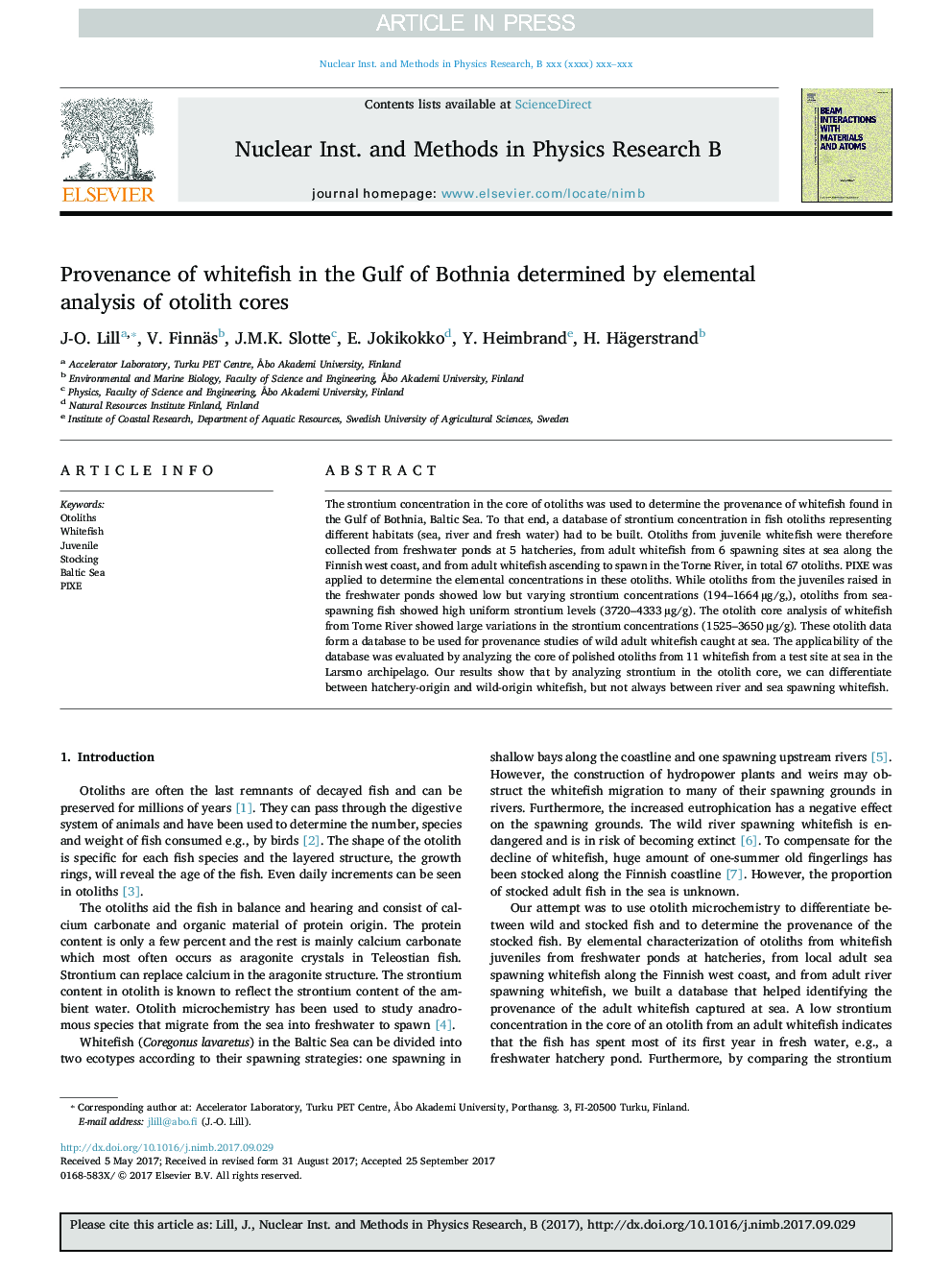| Article ID | Journal | Published Year | Pages | File Type |
|---|---|---|---|---|
| 8039369 | Nuclear Instruments and Methods in Physics Research Section B: Beam Interactions with Materials and Atoms | 2018 | 5 Pages |
Abstract
The strontium concentration in the core of otoliths was used to determine the provenance of whitefish found in the Gulf of Bothnia, Baltic Sea. To that end, a database of strontium concentration in fish otoliths representing different habitats (sea, river and fresh water) had to be built. Otoliths from juvenile whitefish were therefore collected from freshwater ponds at 5 hatcheries, from adult whitefish from 6 spawning sites at sea along the Finnish west coast, and from adult whitefish ascending to spawn in the Torne River, in total 67 otoliths. PIXE was applied to determine the elemental concentrations in these otoliths. While otoliths from the juveniles raised in the freshwater ponds showed low but varying strontium concentrations (194-1664â¯Âµg/g,), otoliths from sea-spawning fish showed high uniform strontium levels (3720-4333â¯Âµg/g). The otolith core analysis of whitefish from Torne River showed large variations in the strontium concentrations (1525-3650â¯Âµg/g). These otolith data form a database to be used for provenance studies of wild adult whitefish caught at sea. The applicability of the database was evaluated by analyzing the core of polished otoliths from 11 whitefish from a test site at sea in the Larsmo archipelago. Our results show that by analyzing strontium in the otolith core, we can differentiate between hatchery-origin and wild-origin whitefish, but not always between river and sea spawning whitefish.
Related Topics
Physical Sciences and Engineering
Materials Science
Surfaces, Coatings and Films
Authors
J-O. Lill, V. Finnäs, J.M.K. Slotte, E. Jokikokko, Y. Heimbrand, H. Hägerstrand,
